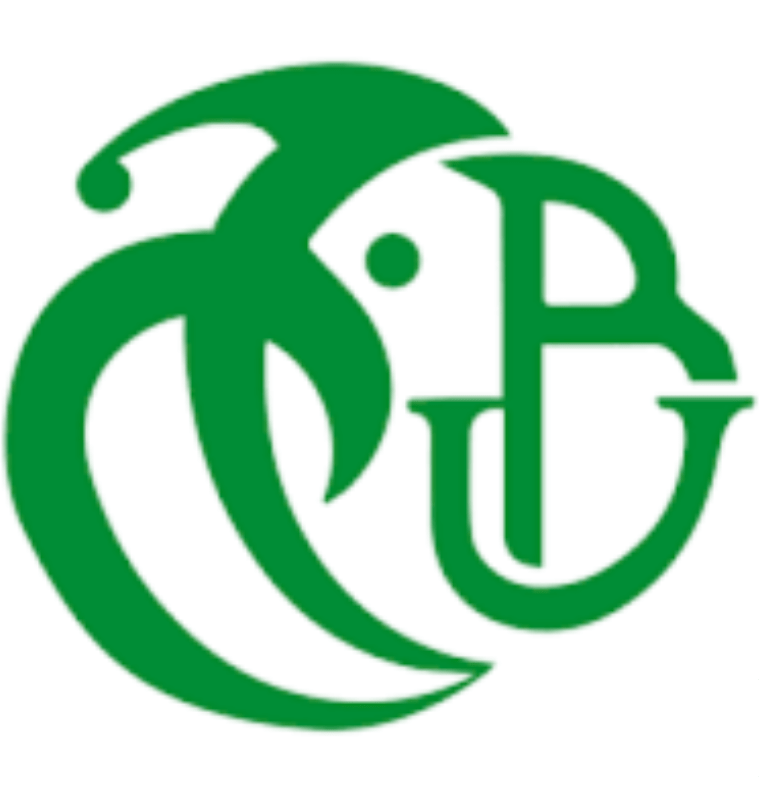Quantification Par La Spectrométrie Gamma Des Radionucléides Naturellement Présent Dans Le Sol
Résumé: The quantification of naturally occurring radionuclides in soil using gamma spectrometry is a methodology used to measure radiation levels in soil samples. This method relies on the detection of gamma radiation emitted by radioactive isotopes present in the soil, such as uranium-238 (238U), thorium-232 (232 Th), and potassium-40 (40K). These samples were analyzed using a gamma spectrometry system equipped with a NaI(T1) detector and Gamma-Vision software. The quantification methodology applied in this study typically involves several steps. Firstly, soil samples are collected in a representative manner from the area of interest. Then, these samples are prepared in the laboratory, which may involve drying, grinding, and homogenization, to obtain representative samples. Sub- sequently, gamma spectrometry is used to measure the radiation levels emitted by the present radionuclides. The measurements performed revealed in Blida 1 University, more precisely at three sites (site 1, site 2, and site 3). the following results: the specific activities of potassium- 40 (40K) across the three sites vary from 464.79 Bq/kg to 967.98 Bq/kg, with an average of 791.25 Bq/kg. The obtained average value is higher than the global average of 400 Bq/kg. For the uranium-238 (238U) family, the specific activities range from 30.37 Bq/kg to 32.74 Bq/kg, with an average of 29.06 Bq/kg. This average is lower than the global average of 35 Bq/kg. Regarding the thorium-232 (232 Th) family, the specific activities vary from 40.31 Bq/kg to 64.32 Bq/kg, with an average of 57.30 Bq/kg, falling within the range of average values provided by UNSCEAR. As for the absorbed dose rates at 1 meter above the soil surface, they range from 109.47 nGy/h to 178.85 nGy/h, with an average of 153.07 nGy/h. The use of the QGIS (Quantum Geographic Information System) software is associated with this methodology. It is used to georeference the collected soil samples, generate distribution maps of radionuclides in the study area, and perform spatial analyses to assess The measurements performed revealed in Blida 1 University, more precisely at three sites (site 1, site 2, and site 3). the following results: the specific activities of potassium- 40 (40K) across the three sites vary from 464.79 Bq/kg to 967.98 Bq/kg, with an average of 791.25 Bq/kg. The obtained average value is higher than the global average of 400 Bq/kg. For the uranium-238 (238U) family, the specific activities range from 30.37 Bq/kg to 32.74 Bq/kg, with an average of 29.06 Bq/kg. This average is lower than the global average of 35 Bq/kg. Regarding the thorium-232 (232 Th) family, the specific activities vary from 40.31 Bq/kg to 64.32 Bq/kg, with an average of 57.30 Bq/kg, falling within the range of average values provided by UNSCEAR. As for the absorbed dose rates at 1 meter above the soil surface, they range from 109.47 nGy/h to 178.85 nGy/h, with an average of 153.07 nGy/h. The use of the QGIS (Quantum Geographic Information System) software is associated with this methodology. It is used to georeference the collected soil samples, generate distribution maps of radionuclides in the study area, and perform spatial analyses to assess The measurements performed revealed in Blida 1 University, more precisely at three sites (site 1, site 2, and site 3). the following results: the specific activities of potassium- 40 (40K) across the three sites vary from 464.79 Bq/kg to 967.98 Bq/kg, with an average of 791.25 Bq/kg. The obtained average value is higher than the global average of 400 Bq/kg. For the uranium-238 (238U) family, the specific activities range from 30.37 Bq/kg to 32.74 Bq/kg, with an average of 29.06 Bq/kg. This average is lower than the global average of 35 Bq/kg. Regarding the thorium-232 (232 Th) family, the specific activities vary from 40.31 Bq/kg to 64.32 Bq/kg, with an average of 57.30 Bq/kg, falling within the range of average values provided by UNSCEAR. As for the absorbed dose rates at 1 meter above the soil surface, they range from 109.47 nGy/h to 178.85 nGy/h, with an average of 153.07 nGy/h. The use of the QGIS (Quantum Geographic Information System) software is associated with this methodology. It is used to georeference the collected soil samples, generate distribution maps of radionuclides in the study area, and perform spatial analyses to assess radiation variations, risk assessment, and management of contaminated environments. Keywords: Gamma spectrometry, natural radioactivity, NaI(TI) detector, QGIS.
Mots-clès:
Nos services universitaires et académiques
Thèses-Algérie vous propose ses divers services d’édition: mise en page, révision, correction, traduction, analyse du plagiat, ainsi que la réalisation des supports graphiques et de présentation (Slideshows).
Obtenez dès à présent et en toute facilité votre devis gratuit et une estimation de la durée de réalisation et bénéficiez d'une qualité de travail irréprochable et d'un temps de livraison imbattable!


